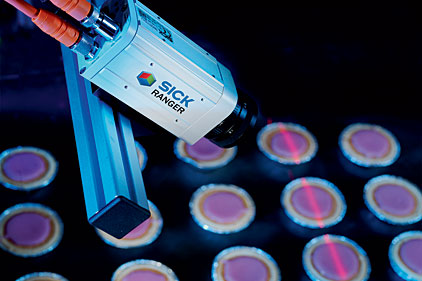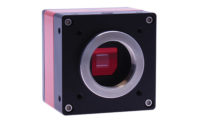 With advantages to each technology, it is important to consider which imager will work for your application. Source: SICK |
Many line scan color cameras are examples of multi-scan cameras, which allow the user to have control over each color band in the image without having to use more than one imager. Other manufacturers have incorporated even more multi-scan functionality into their imagers and cameras. For example, allowing for customer partitioning of the imager into a section that would scan 3-D images, a section that might perform a traditional grayscale line scan, and yet another that would measure the permeability of a plastic or the grain of wood using a technique called scatter. Having all of these types of functions in a single camera have made it possible for machine builders to take advantage of all the different image types that can be made available without increasing the size (often reducing the size) of the inspection portion of their machines.
Using the multi-scan functionality, it would be possible for a machine builder in the baking industry, for example, to scan a cookie and get information and make decisions based on the shape (2-D and 3-D), color (making sure cookie is not over- or undercooked), and using a technique like scatter to determine if there are enough chocolate chips or nuts in each cookie. Having all this data from a single camera changes the ROI for a machine builder to add inspection based on machine vision on all machines instead of an add-on.
Traditionally, most of these multi-scan images have been built on imagers using complementary metal-oxide semiconductor (CMOS) technology due to some of the advantages they have for high-speed scanning. This is a function of how light is converted to electrical charge compared to charge-coupled device (CCD) cameras.
Not to say that CMOS imagers are superior in all imaging applications. The question of imaging in the nonvisible spectrum like the NIR (Near Infrared) and UV (ultraviolet) makes CCD-based imagers a more reasonable solution. To make imagers more sensitive to the NIR, it requires increasing the substrate thickness (or more accurately, the epitaxial or epi layer thickness) to improve the infrared sensitivity will degrade the ability of the imager to resolve spatial features on CMOS imagers. Since CCDs already have a much thicker epi layer, this helps make them more sensitive in general to IR light.
Using the correct type of imager for your application is still the method to use since there are advantages to each technology. The trend indicates an increase in use of CMOS, especially in multi-scan applications, but CCDs are still important and viable solutions in many cases.

